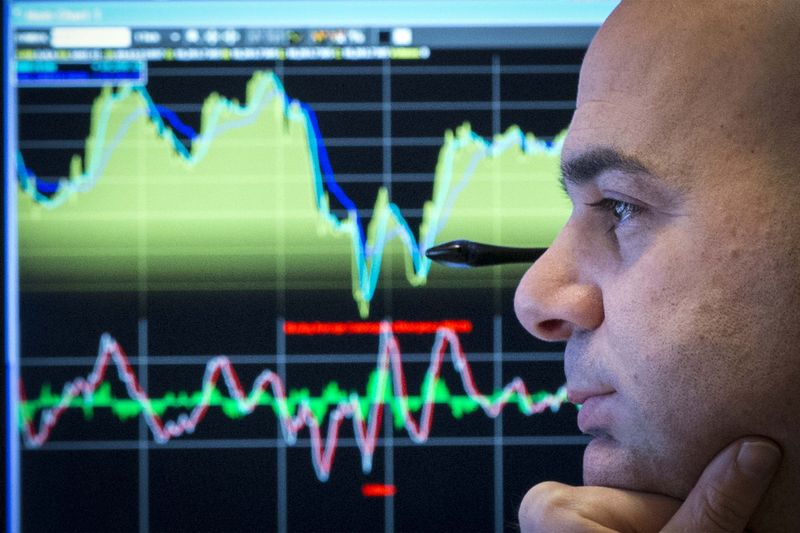Investing.com -- Wall Street looks set to start the week slightly higher, with the focus on the latest inflation data as investors look for confirmation that the Federal Reserve will start cutting interest rates in September. The quarterly earnings season is coming to an end, but the retail sector will be the main focus in the coming days.
1. July CPI looms large
The future path of U.S. interest rates continues to be investors’ main focus, and thus the release of U.S. consumer price data on Wednesday will be the week’s key economic data number.
Federal Reserve Governor Michelle Bowman noting some further "welcome" progress on inflation in the last couple months in an interview on Saturday, softening her usually hawkish tone, but still added inflation remains "uncomfortably above" the central bank's 2% goal.
The Fed at the end of July kept the policy rate in the same 5.25%-5.50% range it has been for more than a year, but signaled that a rate cut could come as soon as September if inflation continued to cool.
July CPI data is expected to show that that inflation continued to edge closer to the Fed’s 2% annual target, with forecasts tipping annual core inflation to fall a tick to 3.2%, the lowest since April 2021.
Fed fund futures imply a 49% chance of a half-point rate cut in September, after climbing as high as 100% at one point last week.
2. Futures edge higher with inflation in focus
U.S. stock futures edged higher Monday, with investors cautious at the start of the week that includes the release of key inflation data as well as important earnings from the retail sector.
By 04:00 ET (08:00 GMT), the Dow futures contract was 40 points, or 0.1%, higher, S&P 500 futures climbed 11 points, or 0.2%, and Nasdaq 100 futures rose by 60 points, or 0.3%.
The main Wall Street indices ended last week with minor losses, representing something of a recovery after the rout at the start of the week.
The jobless claims data helped alleviate investors’ concerns about the strength of the labor market and state of the U.S. economy, and now attention turns to the second part of the Federal Reserve's mandate - the consumer price index [see above].
Investors will also get the chance to hear from several Fed officials including Atlanta Fed President Raphael Bostic, Philadelphia Fed President Patrick Harker and Chicago Fed President Austan Goolsbee.
Comments from a trio of Fed policymakers indicated on Thursday that they were more confident that inflation is cooling enough to cut rates.
3. Earnings season drawing to a close
The quarterly earnings season is in the final stages, with the majority of companies having already reported their quarterly financial results.
But there are still a few U.S. notable names due to report in the coming week including retailers Home Depot (NYSE:HD) and Walmart (NYSE:WMT).
Investors will be on the lookout for what retailers have to say about the resilience of consumer spending, a major driver of growth in the economy, particularly given some recent signs of weakness in economic data.
Other big names on the earnings docket are Cisco Systems (NASDAQ:CSCO) and Fox Corporation (NASDAQ:FOXA).
In Europe, Switzerland's largest bank UBS (SIX:UBSG) reports earnings on Wednesday, while it's a big week for the insurance sector, with Hannover Re (OTC:HVRRY), Aviva (LON:AV), NN Group (AS:NN) (NASDAQ:NNBR) and Admiral (LON:ADML) set to report.
Some of China’s biggest internet firms are also set to report their June quarter results this week, including Tencent Holdings (OTC:TCEHY), Alibaba (NYSE:BABA) Group and JD (NASDAQ:JD).com.
4. UK inflation also in spotlight
The U.K. has a busy economic data calendar this week, as investors look for clues as to whether the Bank of England will continue its rate-cutting cycle next month.
The BoE cut rates for the first time since 2020 at the start of this month and markets are currently pricing in a roughly 33% chance of another quarter point cut at its September meeting.
Data on wage growth is due out on Tuesday, followed a day later by inflation figures, which will be closely watched for indications of lingering price pressures, particularly in the still hot services sector.
Catherine Mann, an external member of the Bank of England's Monetary Policy Committee, said in a podcast released on Monday that goods and services prices were set to rise again and wage pressures in the economy could take years to dissipate.
"There is an upwards ratchet to both the wage setting process and the price process and ... it may well be structural, having been created during this period of very high inflation over the last couple of years," she said.
"That ratchet up will take a long time to erode away," she added.
Mann voted against this month's cut in interest rates, in what was a tight 5-4 decision.
5. Crude continues to climb
Crude prices rose Monday, climbing for the fifth successive session as concerns over the U.S. economy waned while geopolitical tensions in the Middle East remained a support.
By 04:00 ET, the U.S. crude futures (WTI) climbed 0.9% to $77.55 a barrel, while the Brent contract rose 0.7% to $80.25 a barrel.
Both crude benchmarks gained more than 3% last week, the first positive week in five.
Iran and Hezbollah have vowed to retaliate for the assassinations of Hamas leader Ismail Haniyeh and Hezbollah military commander Fuad Shukr.
Axio reported on Sunday that Israeli intelligence believes Iran will attack Israel directly and within days.
Fears that a bigger war in the Middle East will disrupt oil supplies from the crude-rich region have seen traders attach a greater risk premium to oil prices.
Encouraging economic data from the U.S., suggesting that a recession in the world’s biggest fuel consumer may not be imminent, helped the oil market last week.
